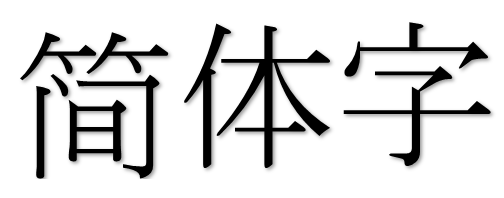Speak to pretty much anyone about SEO and the rhetoric will largely be in regards to the “Big G”.
It makes sense. Google has a worryingly large share of the search engine market, especially in Europe and the US, so why would SEOs spend additional time trying to capture traffic from the lesser-used search engines?
However, unless you’ve been a conspiracy theory style recluse for the last two decades, you will have noticed that China is a country with a rather large amount of people, and this comes with new opportunities.
The Chinese market represents significant opportunity across the board. Admittedly, the opportunities within ultra high growth manufacturing businesses may not be what they were a decade ago but for those willing to make the jump there is the opportunity to tap into one of the world’s largest economies.
The problem? The Chinese search market is one of the only places in the world where Google is not King; they’re not even heir apparent (they almost totally exited China a number of years ago).
Baidu rules the roost in China, so if you want to tap into the Chinese search market, you best get acquainted.
First of all: Get used to the differences
China is a very different country to those found in ‘The West’, to the point that there are a number of businesses which specialize in helping companies bridge the gap between the regions.
Heavy state censorship is but one of the not-so-subtle differences. Much like doing business with, or living in a different country with different rules and culture, your best tactic is to accept the circumstances and adapt. For instance, Baidu’s heavy handed inclusion of their own sub products within SERPs would potentially cause conflicts with competition laws in the EU, but not in China.
New laws in China have significantly reduced the amount of ads in Baidu’s SERPs, but there are still quite a few. Just take it for what it is and, in that most annoying recent British export: Carry on.
The good news: there are similarities
I’ll put my hands up and admit, I put off looking into Baidu SEO for longer than I would care to admit. My assumption (assumption being the mother of all f**k ups) was that I would literally have to learn my craft again. Nothing would be the same.
How wrong I was. Thinking about it, I don’t know why I thought everything would be different. Binary hasn’t changed; yes, there are differences in coding languages and website platforms, but why would Baidu reinvent the wheel? Google arguably didn’t reinvent the wheel; they just added some shiny alloy rims to it.
As such, your SEO 101 type stuff – Metadata, information architecture, Canonical URLs – all of this is still relevant. Baidu may have different weightings and slightly different rules for some aspects (meta descriptions are taken into account) but at least the fundamentals are similar.
There are differences, so as a starter pack of sorts we have included some items for consideration when looking to conduct SEO for Baidu:
Translator/native speaker
This is absolutely critical. Without a professional translator or a native speaker within your SEO team you are going to find yourself struggling.
As with Google, using an automated translation tool will result in content that is understandable, but there will inevitably be holes in it. Search engines (including Baidu) care about content and the quality of said content, so you are going to need someone who can create content to the required standard.
Furthermore, Baidu’s Webmaster Tools are not shown in English, so hopefully it is obvious why you need a native speaker!
Mobile
The mobile trend does not stop with the public’s use of mobile devices, or Google’s mobile first indexing and accelerated mobile pages (AMP). In fact, mobile is even more important in China, where owning a desktop or even a laptop was never really commonplace; the mobile is most people’s first and only portal to the online world.
As such, Baidu care deeply about mobile. They have their own version of AMP (called Mobile Instant Page – MIP) and you can bet that much like Google’s mobile first indexing, Baidu will continue to bake mobile deeper and deeper into their algorithm.
Load speed and display on mobile devices will be crucial both now and into the future for ranking on Baidu, so make this a priority for your website.
Simplified characters
Whilst Baidu will index the more traditional Chinese characters, the search engine favors simplified Chinese characters. Don’t make Baidu work harder than it has to and use the simplified version.
HTTPS
In 2015 Baidu announced that HTTPS would be included as a ranking signal, and looking at the updates from Baidu in the latter half of 2016, there is a definite focus on security, especially mobile security. Look up the IceBucket and Skynet updates from Baidu in reference to their focus on mobile security.
Inbound links
A few years ago it was generally accepted that Baidu was some way behind Google in terms of their ability to decipher link signals. Think pre-Penguin Update style link building tactics: forget about quality, more is better (not that those tactics were ever justifiable in the long term).
This is not the case in 2017. Baidu are clearly upping their game when it comes to link metrics. Again, look at the fantastically named ‘Green Radish’ update as an example; it is reminiscent of the Penguin update, targeting spammy link building practices.
It stands to reason that Baidu will continue to observe Google’s updates and learn from them, subsequently implementing their own updates that focus on preventing such manipulation.
Do not be afraid
This may be somewhat controversial due to the fact that there are definitely differences in tactics for SEO teams targeting Google or Baidu. However, both search engines appear to be on a similar trajectory. In the end they both offer the same service: to provide the searcher with the most valuable and relevant result according to their search term.
Yes, Google and Baidu may have different strategies when it comes to monetizing their traffic, but they still want their users to keep coming back. Both Google and Baidu are constantly improving their ability to highlight the best quality content, alongside an ever quickening shift towards mobile devices as the most critical priority.
As mentioned previously, I completely understand the reluctance for those ‘Google’ SEOs when it comes to embarking on the learning curve required for Baidu. Furthermore, regardless of the similarities, there will absolutely be a learning curve.
Even though there is considerable overlap, you will have to get to grips with the prominence attached to certain elements by Baidu and therefore assess where your time is best spent. Don’t forget that you’ll need a native speaker as well!
What is clear, though, is that Baidu’s development has been significant in recent years, providing a platform that is focused on very similar core principles to Google. If you keep these core principles in mind, rather than looking to take advantage of potential gaps in Baidu’s algorithm, you will have a far more sustainable and long term Baidu SEO strategy.


